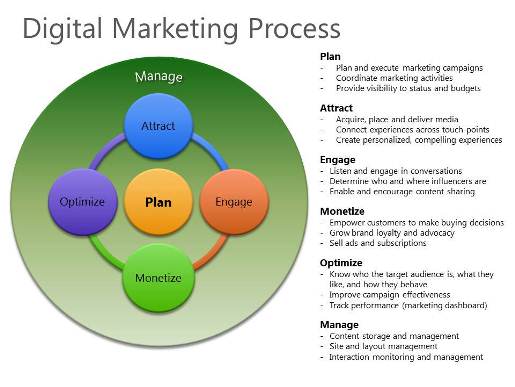Digital Marketing Starts with Planning
Guest blog from Paul Manikas, Industry Market Development Manager, High Tech & Electronics Industry group
The marketing landscape has undergone a major transformation. Broad usage of the internet and socal media has created a shift in customer buying power and behavior. Businesses no longer control the conversations with their customers. Instead, customers and prospects engage with organizations on their own terms. Conversations over social media are replacing surveys and focus groups as the primary means of capturing customer intent. Buyers don't trust corporate advertising messages and are more inclined to trust recommendations from friends, peers and other customers. A brand is no longer what you say it is, it's what they say it is. Social media has emerged as a powerful and necessary marketing channel for gaining and retaining customers.
As the number of people who participate in social media sites continues to explode, it becomes increasingly important for marketing organizations to leverage this channel. By definition Digital Marketing is marketing that uses interactive connections between seekers and providers enabled by digital/social media. Digital Marketing best practices generally include the process steps of Listen, Engage, Attract, Monetize, and Measure, but this view is incomplete. Digital Marketing also requires other elements to generate the desired results, specifically Planning, Management and Optimization. I've proposed the following model to illustrate the Digital Marketing process.

In this blog I'll cover the Planning step.
The addition of digital media has complicated the planning and budgeting process because now marketers have more channels to consider. Developing an integrated marketing plan that optimizes spend across many marketing channels is quite challenging. It is particularly difficult for companies that consist of multiple business units with disparate processes. Each group often has its own approach for planning and going to market, which makes it hard to share best practices and create a consolidated view.
Marketing organizations face common challenges related to planning:
- Limited visibility into the status of marketing projects
- Incomplete visibility into budgets and marketing spend
- Lack of a central location for creative files
- Lack of a centralized project plan and marketing calendar to coordinate activities
To address these challenges, marketing organizations can take advantage of the Microsoft Enterprise Project Management (EPM) Solution, an end-to-end collaborative project and portfolio environment. The EPM Solution helps a marketing organization gain visibility, insight, and control across all work, enhancing decision-making, maximizing resource utilization, and measuring and helping to increase operational efficiency.
Sony Electronics has implemented a planning solution called Marketing Resource Management (MRM) based on Microsoft EPM. The web-based tool offers a single point of entry for fiscal year budget line items; an auto calendar capability of proposed market activity; a report of planned spend for fiscal year buckets; and an online view of proposals. Senior leadership has a cross-category, consolidated view of activity. An auto calendar report enables users to be aware of what's coming and adjust plans as needed. Sony can now better manage resources and minimize duplication of marketing materials. These operational efficiencies are expected to eliminate 2.5% of marketing spend across all divisions. When fully operational, MRM will also allow Sony to conduct accurate financial reporting, which will enable users to look at the ROI of specific marketing activities and reallocate funds and resources to higher performing campaigns and channels.
To learn more about Microsoft's Digital Marketing solutions, check out our full-spectrum web platform which enables businesses to build rich-branded websites that help reach, engage and empower your customers and partners with the best publishing, monetization & collaboration tools.